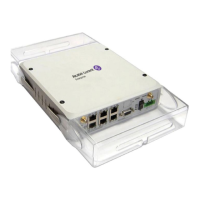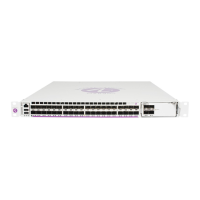VLL Services
7705 SAR OS Services Guide Page 137
ATM VLL (Apipe) Services
This section provides information about the Apipe service. Topics in this section include:
• ATM VLL for End-to-End ATM Service
• ATM SAP-to-SAP Service
• ATM Traffic Management Support
• Control Word
Apipe configuration information is found under the following topics:
• Common Configuration Tasks on page 198
• Configuring VLL Components on page 199
→ Creating an Apipe Service on page 200
• Service Management Tasks on page 221
ATM VLL for End-to-End ATM Service
ATM VLLs (Apipe) provide a point-to-point ATM service between users connected to
7705 SAR nodes or other SR routers over an IP/MPLS network (see Figure 19). User ATM
traffic is connected to a 7705 SAR either directly or through an ATM access network. In
both cases, an ATM PVC—for example, a virtual channel (VC) or a virtual path (VP)—is
configured on the 7705 SAR. VPI/VCI translation is supported in the ATM VLL.
The 7705 SAR receives standard UNI/NNI cells on the ATM service access point (SAP),
which are then encapsulated into a pseudowire packet using N-to-1 cell mode encapsulation
in accordance with RFC 4717.
The ATM pseudowire (PW) is initiated using targeted LDP signaling as specified in
RFC 4447, Pseudowire Setup and Maintenance using LDP; alternatively, it can be
configured manually. The 7705 SAR supports MPLS, GRE, and IP as the tunneling
technologies for transporting ATM PWs.
In addition to supporting N-to-1 cell mode encapsulation, ATM VLL service supports cell
concatenation, control word (CW), SAP-to-SAP (local service), and SAP-to-SDP binding
(distributed service). See SAP Encapsulations and Pseudowire Types on page 182 for more
information on N-to-1 cell mode encapsulation.
ATM VLL optimizes the ATM cell from a 53-byte cell to a 52-byte packet by removing the
header error control (HEC) byte at the near end. The far end regenerates the HEC before
switching ATM traffic to the attached circuit.

